Zenith Angular Distribution of Cosmic Ray
06/15/2017
Abstract
The purpose of this experiment is to analyze the range of angles that cosmic ray muons penetrate the Earth and the angle which most enter from.
Introduction
Cosmic rays and the muons produced by them penetrate the Earth at various angles. My project compares the probability that muons will enter the Earth at various angles. This is done through changing the "length" of the detector which directly affects the angular range that the detector can collect events. To be able to count as an event, the muon must pass through all four scintillation plates. When the detector's plates are closer to each other, the range of angles that muons can pass through is larger. As the plates become more seperated, the range that the muons can pass through is lessened since the muon must travel at a smaller angle to be able to also pass through the lower detector plates. By analyzing the differences between the counts at various angles, is there an angle that muons are most likely to hit the Earth at, and if so, what is that value?
Procedures
Using a standard bookshelf, two counters remained on the bottom shelf throughout the experiment as the remaining two counters were placed together on another shelf above. The distance between the top of the first plate and the top of the last plate and the number of events collected over fifteen minutes was recorded. This process was repeated for 3 more shelves at different heights, later named "levels".
After, the rate of the counts per minute was calculated. Rate = Counts/Time (time is fifteen minutes). Next, the differences between the total counts and rates of each adjoining level was calculated. This shows approximately how many counts are produced in a certain range of degrees. Then the maximum degrees the detector can measure per level were calculated using cos(38.1/d) where 38.1 is the hypotenuse of the scintillating plate (cm) and d is the distance the plates are seperated (cm). This number is then multipled by 2 to find the total collecting angle of each level. Then the differences between these maximum angles yield the additional ranges of degrees that each subsequent level detects. Then, the count and rate differences are divided by their associated degree ranges.
Results
Without proper analysis and error calculations, the shortest separation between the plates has the highest count and rate per degree. Therefore, we can conclude that the majority of muons entered the detector between 80 and 95 degrees to the zenith angle.
Figures

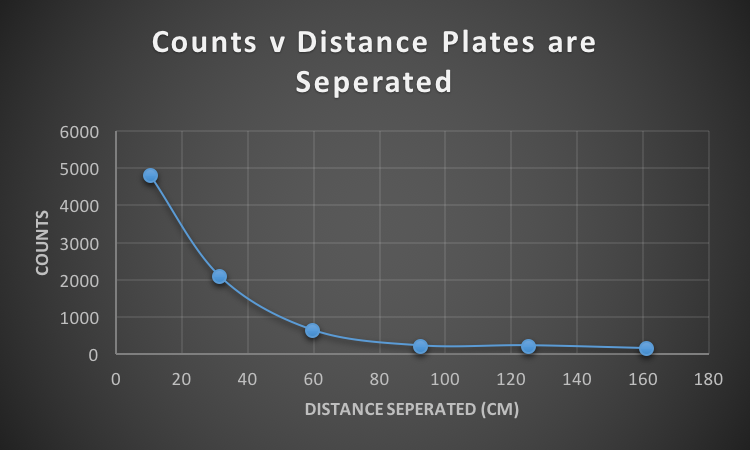
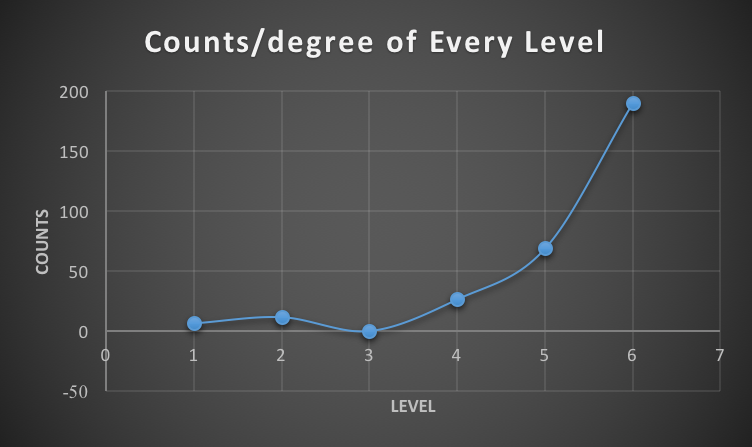
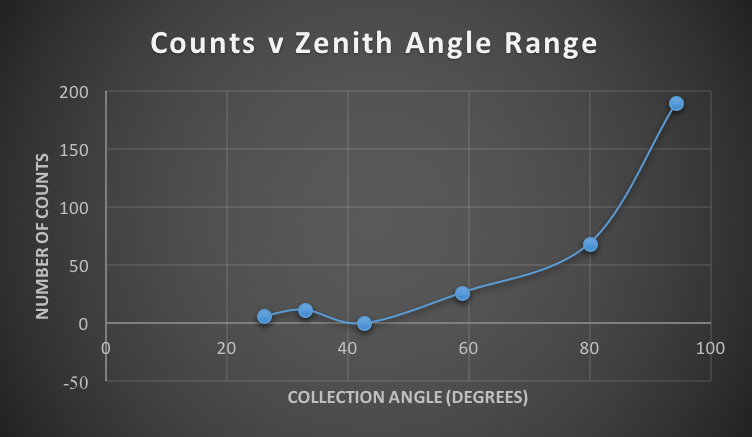
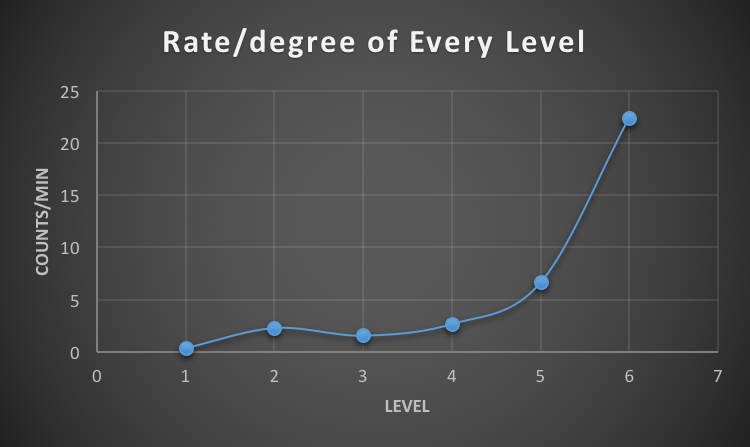
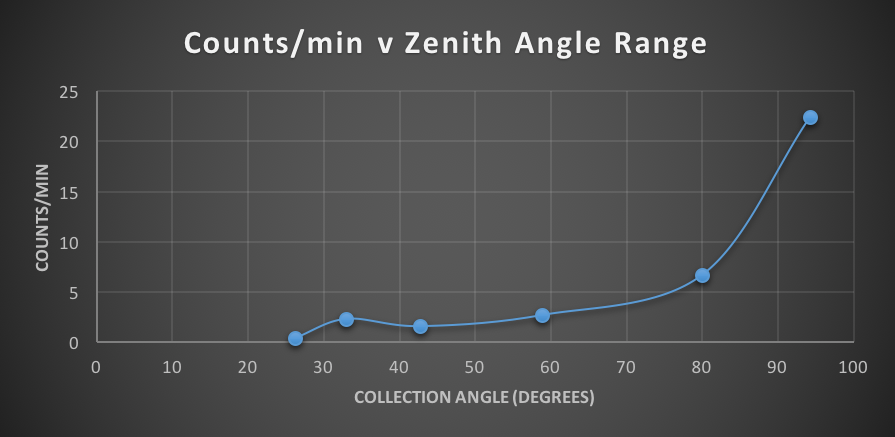




Discussion and Conclusions
The conclusion that more muons enter the detector nearly parallel to the surface of the Earth seems incorrect, given that we can assume the majority of cosmic rays enter the Earth at an angle reasonably close to the zenith and near the angle that the Sun is in the sky. Our experiment was conducted during the day, so we can say it is approximately 0-20 degrees. Significant error could have been introduced due to additional interactions that could have taken place between the top and bottom plates. As the distance between the plates decrease, the likelihood of particles passing through all four plates increases significantly. To correct for these problems, we can increase the size of the plates and have a more controlled environment. In addition, incorrect assumptions may have been made in calculations that can be further improved.
Bibliography